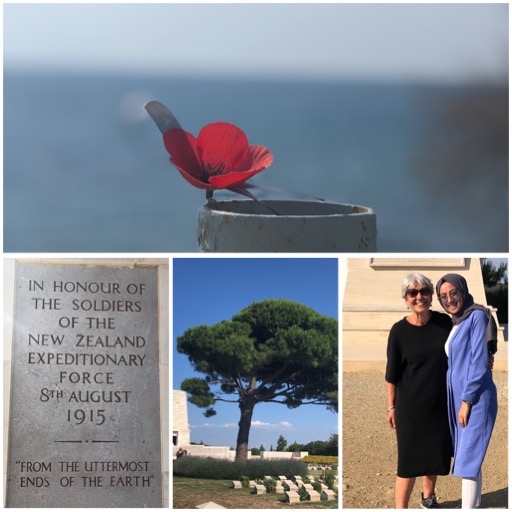
From Istanbul our next destination is Gallipoli. As New Zealanders this is an important and a very moving historical site for any tour group. An understanding of the tragedy was very poignant when this young Turkish girl wanted her photograph with me and I was delighted.
In a military disaster just over 100 years ago, about 58,000 allied soldiers – including 29,000 British and Irish soldiers and 11,000 Australians and New Zealanders – lost their lives on the Gallipoli peninsula. A further 87,000 Ottoman Turkish troops died fighting the allies and at least 300,000 more on both sides were seriously wounded.
“Hanging on”, living amid filth, sickness, disease, and death, while under constant threat of enemy fire, was an ordeal. Having left home seeking adventure and possible glory, troops on Gallipoli found themselves dirty, thirsty, constantly digging and tunnelling, and living in cramped dug-outs.
Beside Anzac cove Mustafa Ataturk’s moving worlds stand as a reminder of the Gallipoli tragedy and although they make you cry I also think they capture the Turkish warmth and kindness.
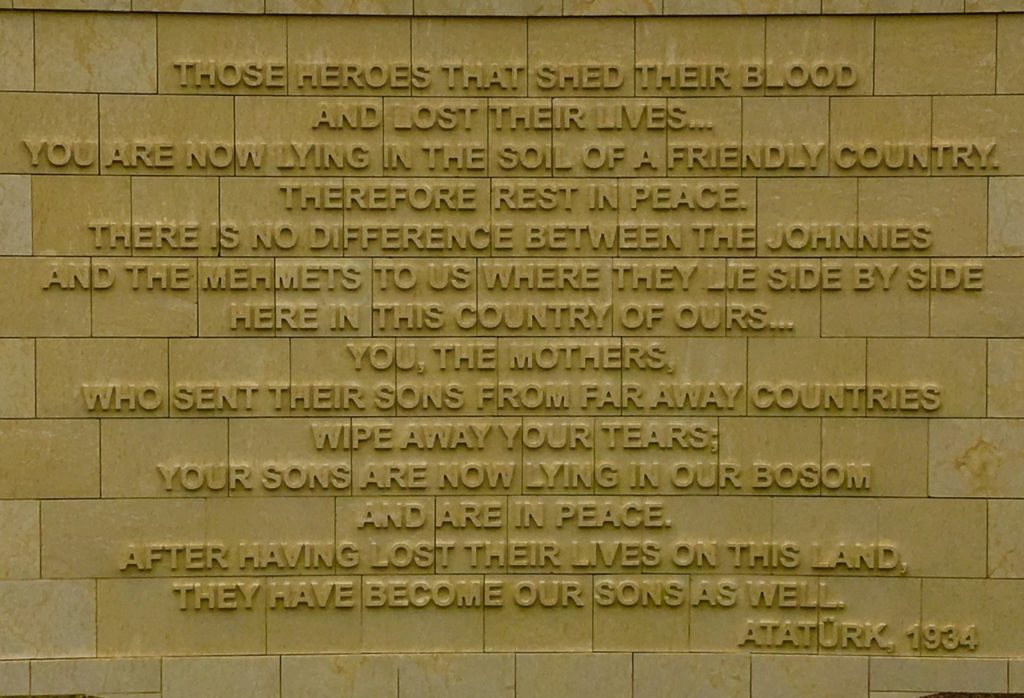
This year we chose to leave Istanbul by ferry boat to Yalova, across the Sea of Marama and spent a night in Bursa – the city famous for Silk production.
Met by the happy smiley face of my favourite guide Yeliz, she wile with us for the next 4 days. Starting with some scarf shopping in a traditional old market building, we had a very different mosque experience in a large family friendly multi domed mosque with beautiful calligraphy lining the walls.
Sugar syrup chestnuts are famous here and Hasan ensured we all tasted these tasty morsels.
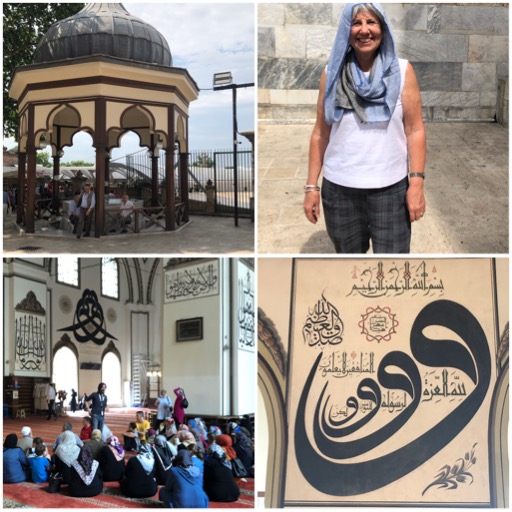
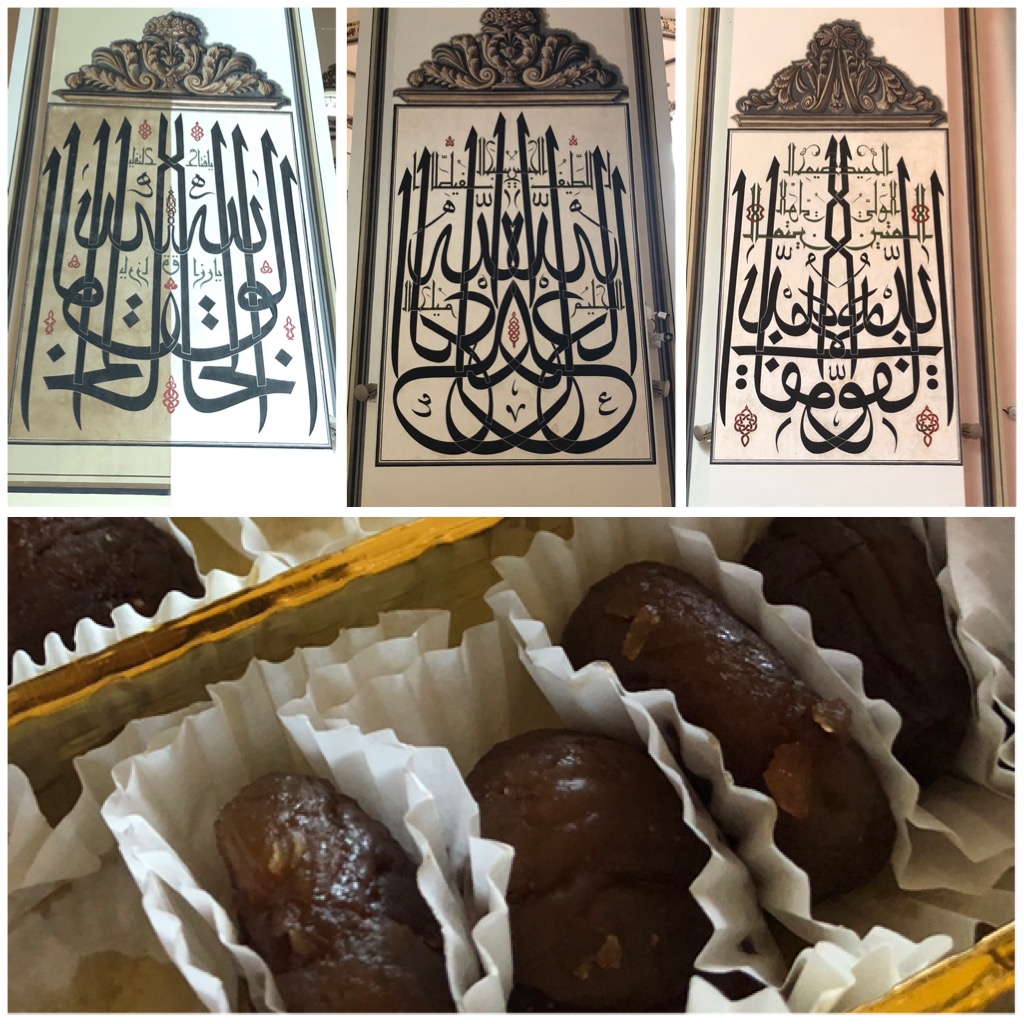
The drive down the Aegean coast line included visits to the big ticket historical sites, starting with Troy and reaching Pergamom by lunch.
When Alexander the Great died in 323 BCE, his generals divided the territory he had conquered, which resulted in a power struggle between them. Pergamon was little more than a hilltop fortress with a settlement. After years of unrest, the city became part of the territory controlled by one of the Macedonian generals. Pergamom became the capitol of the most powerful kingdom in Antolia and eventually ruled by the Eastern Roman Empire. It was always a city famous for its extensive library and thousands of books written on parchment. Over time Pergamom lost its power and status to its neighbouring city Ephesus.

For the second year in a row we ate at Yeliz’s friends local restaurant at the foot of Pergamom, she serves meals of the day based on seasonal vegetables – always expect tomatoes, eggplant and zucchini and today new seasons Okra .

The temperatures have now reached high 30’s and some days over 40 deg. Vista hotel for 3 nights in Kusadasi was a blessed relief. After traveling in our bus with minimal air conditioning all day. Its position and view over the bright blue Aegean sea is beautiful and within minutes the absolutely fabulous infinity pool was full of New Zealanders and 2 Australians. Watching the sun go down while sitting outside on the balmy night, eating dinner, feeling relaxed and enjoying each others company couldn’t have been a better end to a long day.
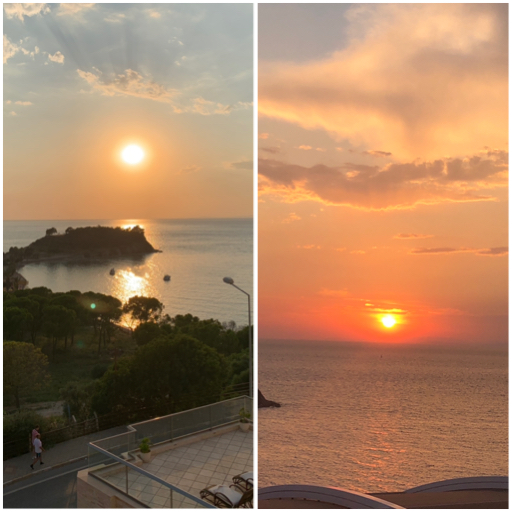
Consequently it was an early start to Ephesus the following morning to beat the crowds and the heat . Over the centuries, a succession of empires—Greek, Persian, Roman, Byzantine and, finally, Ottoman—ruled over the city of Ephesus. We actually visit the 2nd Ephesus which was a vibrant metropolises of the ancient world. Today 12% of the enormous site has been excavated. Where once the sea reached the gates of the city containing the largest trading port. Silt and mosquitoes ensured its decline.
It’s hard to imagine over 300,000 people living here. Ephesus’ greatest claim to fame was its temple to the goddess Artemis. One of the “seven wonders” of the ancient world, it was almost four times larger than the Parthenon in Athens. Today, a few columns are all that remain of the the temple. But there is still much to see that evokes the city’s former splendour. A three-tiered theatre, built into the slope of a hill, once seated 25,000. a reconstruction of the massive library and an insight into private houses with ornate mosaic floors. Its a truely unmistakable powerful visit and Yeliz brings it to life. We get the sense of what walking down the street of a Roman city was like and can use own imaginations to interpret what life would have been like .
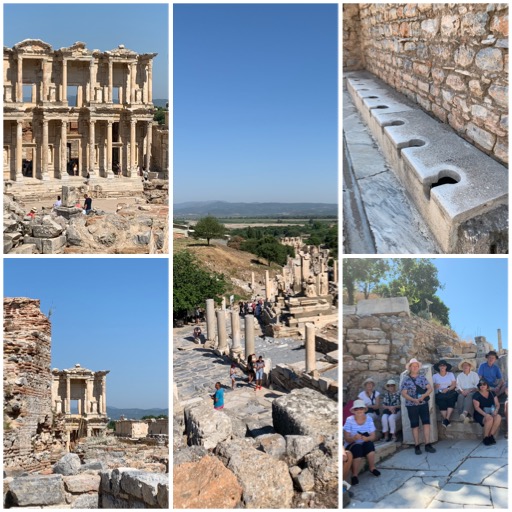
An afternoon in the pool and a few hours in a deck chair with a book was relaxing and I think for some an afternoon sleep came as a welcome relief from a week of busy days.
Life for some Turkish people still follows their Nomadic traditions. Yeliz and her brother invited our group to visit her parents who live the summer months high in the mountains behind the major city of Aydın, where Yeliz went to school. Our bus crawled up a very steep very bumpy road through pine trees then across sparse hilltop slopes. Emerging at the top was a green oasis of fruit and nut trees – apples, figs, chestnut and walnuts and a cluster of minimal basic houses. We were greeted by Yeliz’s parents and extended family -They spoilt us and provided a delicious lunch of salad vegetables from their hot houses and barbecued kofte, chicken and lamb , cooked by the women while the men socialised and did nothing – but shared their hospitality by offering their homemade Raki.
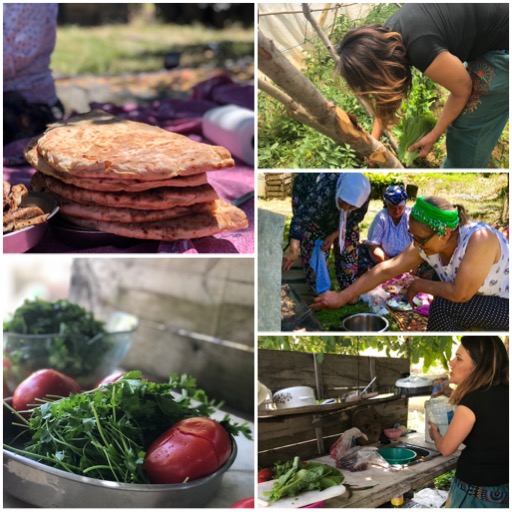
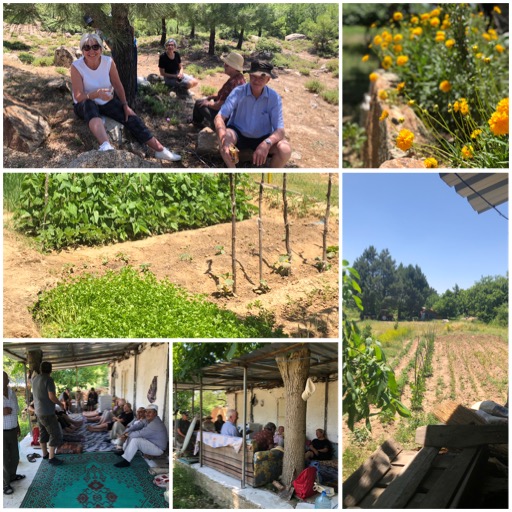
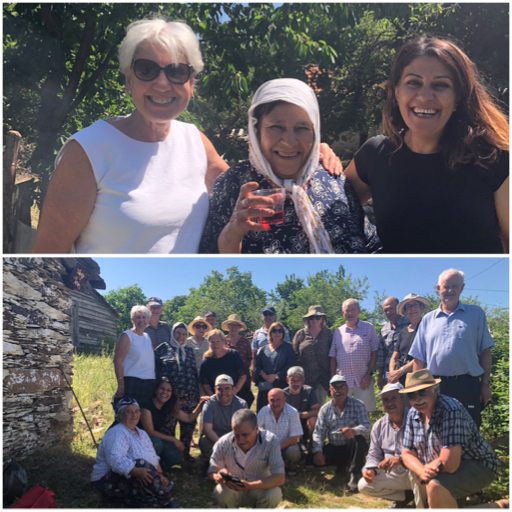
This was an extremely special visit and we were delighted to get an insight into the life of Nomadic Turkish people, look into their houses, walk through their vegetable gardens, pick plums (they eat plums green here with salt- not our taste ) and take lots and lots of photos .